As our business grows our high traffic website needs to grow in capacity to accommodate more visitors. Because the quality performance and the shrewdness to respond to the visitors are imperative today. Hence, to turn the websites smarter there are a few challenges to face. A timely redesign is the first hurdle that comes across on that journey. That creates an improved user experience that provides the features you and the visitors want.
But still, the high traffic flow that you’ve already earned is increasing! Ideally, your redesign will even lead to increased traffic and stabilize the performance of your website in all such scenarios. Besides, you need a few more factors such as a measurable goal, high bandwidth servers, improved optimization, and so on.
How do you pull that off? The following 6 tips will help you plan and execute a redesign that allows you to keep your current rate of traffic, and then some.
First, decide why you are engaging in this redesign. What are the goals you need to achieve to your high traffic website? Are you doing this simply because you want to optimize your high traffic website, or do you have other objectives?
Are you introducing new products, engaging in a visual rebranding, or trying to attract a wider audience? Once you understand your goals, you can create a list of changes and enhancements you can make in order to achieve those.
SEO is key to ensure that your website continues to rank high for keywords that are relevant to your company, products, and services. At first glance, SEO can seem a bit intimidating, but many of the techniques can be broken down and simplified. Here are some things to consider.
Even though keywords aren’t as important as they once were, they still play a significant role in the way that Google indexes and ranks your site. You must select the right keywords first.
To do that, start with your existing web pages. Determine which ones are getting the most traffic. Then, identify the keywords that are the focus of those pages. Next, take a look at your most popular competitors.
Use a keyword research tool to research the keywords you’re currently using. You’ll learn how the similar high traffic websites are ranking top in these searches, and what they are writing about. You can also use a tool like Google Keyword Planner to get competitor data on keyword use.
With Google Keyword Planner you can get insight into all relevant information about the keyword. For example, let’s say that you run a coffee-business and you are writing coffee-related blog posts on your website.
You can see whether you should continue with such topics or make some changes, just run that keyword through the Planner and click on Get results. The more specific the keyword is, the better.
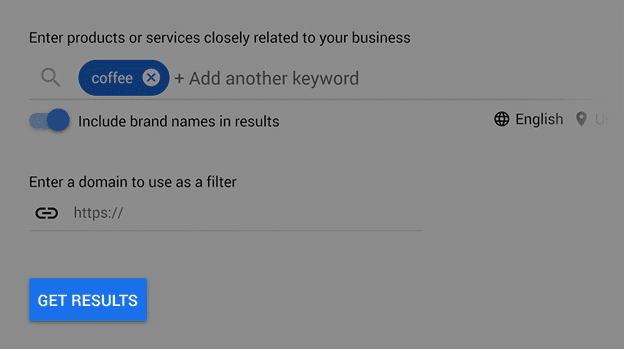
The tool will show you average monthly searches and the competition of the keyword across the similar high traffic websites.
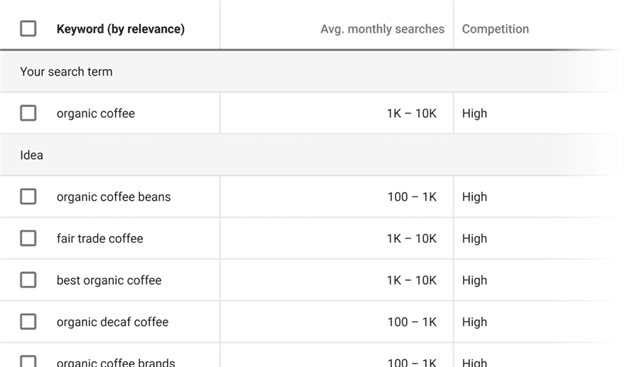
Chances are, there are blog posts and other web pages that have linked to pages on your website. If you delete pages, add new ones, or change existing pages, what happens to those links?
If your URL structure is changing, be certain that you know what you are doing. Otherwise, you could find yourself dealing with broken backlinks to your page and search engines that no longer understand your website.
If you can keep your URL structure as it is, that might be a good idea. If not, you’ll need to use 301 redirects to keep your traffic and rankings high. The 301 redirects forward one URL to your preferred URL.
If you have a WordPress website, use a free plugin such as Quick Page/Post Redirect. First, go to the post you want to 301 redirects. Then go to a new URL, go to the bottom of the page and you’ll see the options:
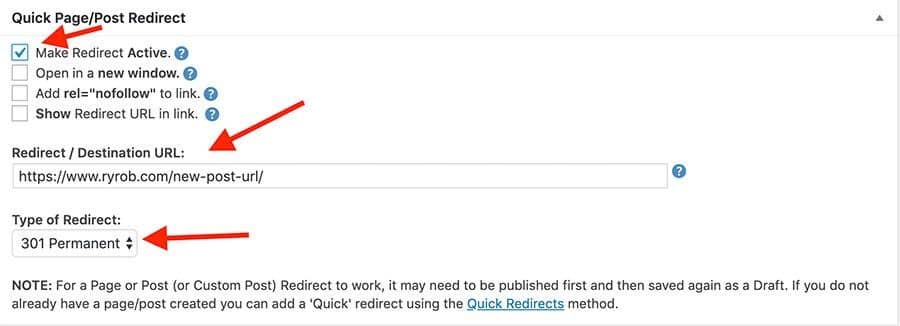
Google has changed their algorithms so that mobile-friendly sites always receive SERP priority. Be certain that you test your newly redesigned site on a variety of device types and screen sizes to ensure that search engines see your site as mobile-friendly.
Now, since you are redesigning your website, it’s a good time to improve your site’s performance. Consider using Google’s Page Speed Tool to get insights into this issue along with suggestions for improvement.
All you need to do is to enter the link of your website and you’ll get all the info, for both the mobile devices and the website. The results will look something like this:
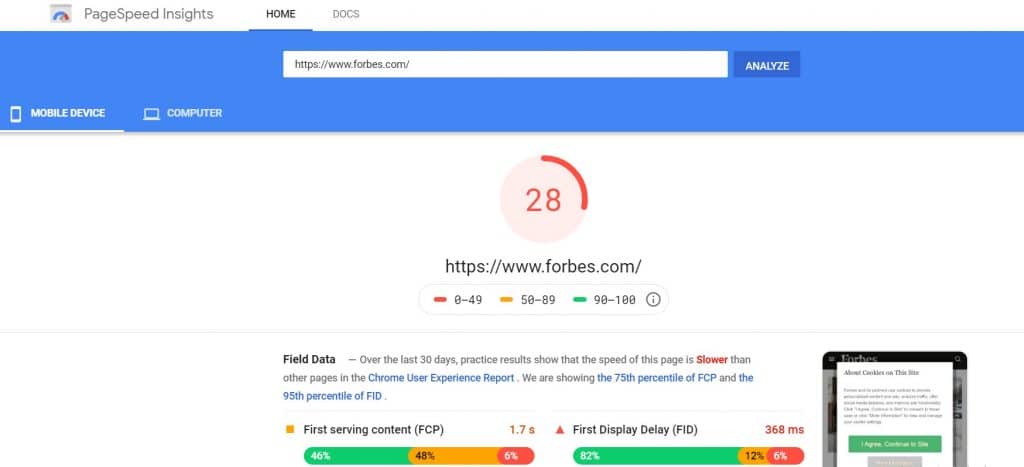
The competition for the high traffic websites is too high and it needs structured and optimized contents to stand out. It is the content on your website that educates your audience, provides descriptions of your products, and allows your visitors to get to know your brand.
Good content doesn’t just sell a product, it helps you to create relationships with your customers, build thought leadership, and ensures a steady stream of traffic to your site.
Your content has to meet the needs of your target audience. It must provide them with the information they need, and in a way that they can easily find what they are looking for.
Think about the keyword tip mentioned above. That’s how you identify the keywords you should be using. Now, it’s time to put those keywords to use in a natural, relevant way via your content.
It’s also important to consider content layout and formatting in your high traffic website. It’s not enough to provide your visitors with relevant information, you must also format that in the most readable way possible. Large blocks of text are overwhelming to read and will cause visitors to bounce.
Break your content into logical pieces. Use headings and subheadings with appropriate tags and keywords. Take a look at how one of the most popular bloggers Neil Patel formats his website:
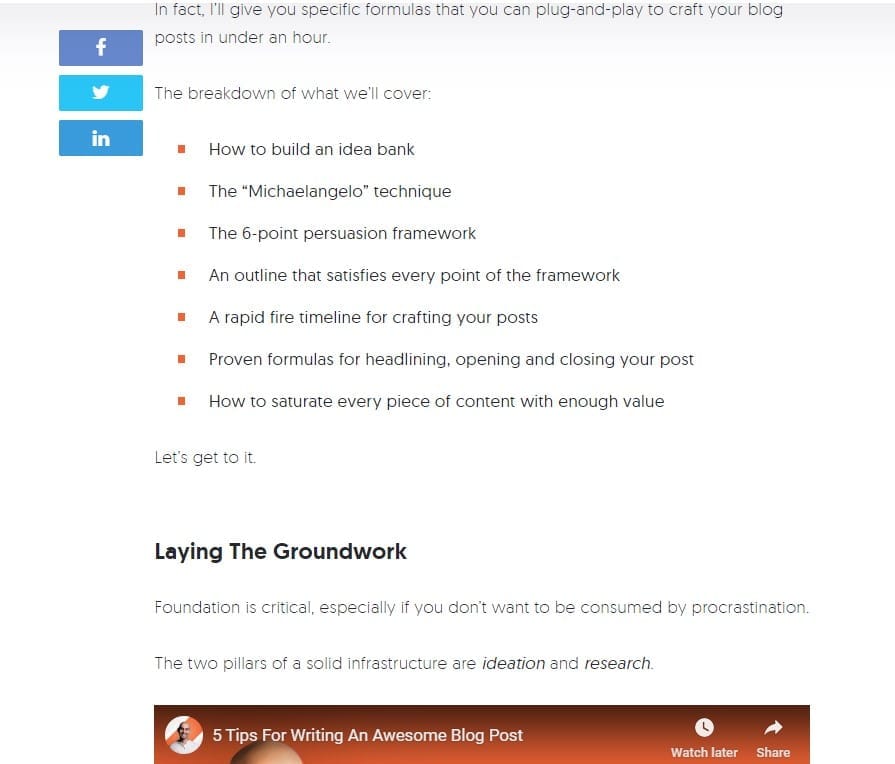
He uses subtitles, bullet points, numbering, and relevant visuals. Even though his posts are often elaborate and lengthy, the formatting makes them readable and engaging.
Finally, when you produce high-quality content, you are more likely to earn backlinks from other sites. Not only can this drive new traffic to your site, but it also increases your authority, and improves your search engine rankings.
If you’d prefer focusing on the design side, you can always outsource your content creation to services like TopEssayWriting, WriteScout, and ClassyEssay that will help you by creating high-quality, keyword-optimized content.
Gone is the day that you can easily drive traffic with just a website and conventional marketing techniques. Today, the tech-reliant customer base has been seeking who gives the best services in a short time. For that, you need a professional server hosting provider in hand.
As a result, the way customer approach websites have changed dramatically. Today, no customer waits more than 3 seconds on an average on a website to load. If the website failed to load up with that short span they will bounce to another website.
Hence the page speed and page load speed contribute a lot in deciding the growth of a business. A high traffic website that has visitor efflux fails to load appropriately the whole design practice will be in vain. Hence, high bandwidth hosting is important to deliver a stable website performance for high traffic websites.
And the need for the bandwidth can be determined based on the layout of the website, traffic flow rate, business growth plans.
So, for that, website owners have to select the most suitable server hosting provider. Further, make sure that they have the expertise to recommend the optimal bandwidth for your particular website.
Heavy traffic is great, but not if your website comes to a crashing halt. Test your website to ensure that your site and the server it stands on can continue running, and providing a great user experience, even in the heaviest of traffic conditions.
Fortunately, you can load test your site fairly easily. There are a variety of tools that allow you to conduct performance testing on your website so that you know it is always at peak performance.
website.
Most of the design tips here involve using design to improve search engine rankings and on-site experience. However, search traffic isn’t your only source of traffic. There’s a simple design element that you can add to drive more traffic to your site for social media. By simply adding social share pages to your blog posts, and other content, you can extend the reach of your site to new audiences, and increase traffic back to your page. Find a corresponding plugin for your website and add the social share buttons that will lead to all your social media accounts.

Redesigning your high traffic website with the goal of maintaining or increasing your traffic takes a lot of effort. Fortunately, if you approach it with a clear strategy, use the right tools and resources, and implement some of the tools listed above, you can rebuild a site that is optimized for maximum traffic.

